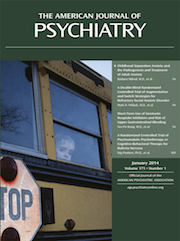Childhood Separation Anxiety and the Pathogenesis and Treatment of Adult Anxiety
Abstract
Clinically significant separation anxiety disorder in childhood leads to adult panic disorder and other anxiety disorders. The prevailing pathophysiological model of anxiety disorders, which emphasizes extinction deficits of fear-conditioned responses, does not fully consider the role of separation anxiety. Pathological early childhood attachments have far-reaching consequences for the later adult ability to experience and internalize positive relationships in order to develop mental capacities for self-soothing, anxiety tolerance, affect modulation, and individuation. Initially identified in attachment research, the phenomenon of separation anxiety is supported by animal model, neuroimaging, and genetic studies. A role of oxytocin is postulated. Adults, inured to their anxiety, often do not identify separation anxiety as problematic, but those who develop anxiety and mood disorders respond more poorly to both pharmacological and psychotherapeutic interventions. This poorer response may reflect patients’ difficulty in forming and maintaining attachments, including therapeutic relationships. Psychotherapies that focus on relationships and separation anxiety may benefit patients with separation anxiety by using the dyadic therapist-patient relationship to recapture and better understand important elements of earlier pathological parent-child relationships.



